#Glanville fritillary butterfly
Explore tagged Tumblr posts
Text
Butterfly experts in flap over 'extinct' species in New Addington
The sighting of a butterfly thought to have been extinct for nearly 100 years at Hutchinson’s Bank at the weekend has put wildlife enthusiasts into a bit of a flap. Spotted: Frank Gardner’s ‘trophy’ photo of the black-veined white butterfly at Hutchinsons Bank from Saturday The sighting of the black-veined white butterfly was made by Frank Gardner, the BBC’s security correspondent and an amateur…

View On WordPress
#Black-veined white butterfly#Butterfly Conservation#Frank Gardner#Glanville fritillary#Hutchinson&039;s Bank#London Wildlife Trust#New Addington
1 note
·
View note
Photo

Belle mélitée 📷 @sebastien_blomme 🇫🇷 Ce joli papillon est une mélitée du plantin. J'avoue que je ne le photographie pas très souvent malgré sa beauté. Et c'est un tort car c'est non seulement un papillon magnifique, mais en plus il se pose très tôt avant le coucher du soleil ce qui facilite le travail du photographe 😊 🇬🇧 This pretty butterfly is a Glanville Fritillary. I admit that I don't photograph it very often despite its beauty. And it's a mistake because not only is it a magnificent butterfly, but it also lands very early before sunset, which makes the photographer's job easier 😊 https://ift.tt/A3BbOoT
43 notes
·
View notes
Text
Butterflies 🦋


0 notes
Text
May 15th - Experiment research
First I looked for a list of the red list species of butterflies
Half of British butterfly species on new Red List | Butterfly Conservation (butterfly-conservation.org)
Revised Red List of British Butterflies | Zenodo
A revised Red List of British butterflies
Richard Fox1 & Emily B. Dennis1
1 Butterfly Conservation, Manor Yard, East Lulworth, Dorset BH20 5QP, UK.
Using this list I am going to research these butterflies to find images.
Black Hairstreak

Glanville Fratillery

Grayling

Heath Fritillary
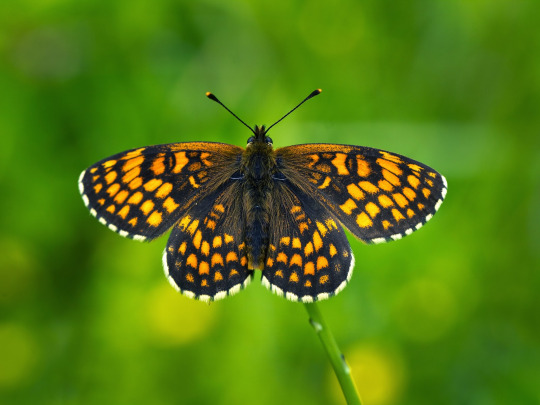
High Brown Fritillary

Large heath
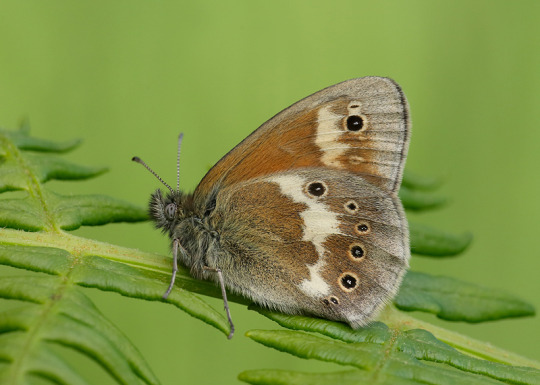
Wall
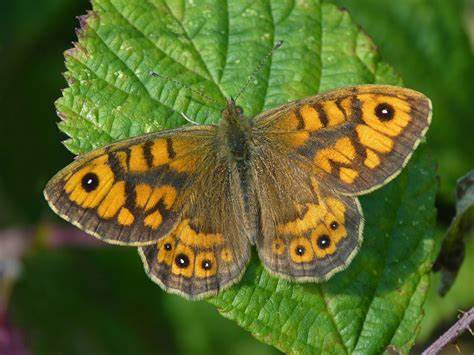
Wood White

Using these images I am going to create experimentations in different ways considering shape and lines to see how I could create a themed typeface connecting to the red list of butterflies.
0 notes
Link
Metapopulation - Wikipedia
Ilkka Hanski - Wikipedia
Glanville Fritillary (Melitaea cinxia) - Wikipedia
#Yle.fi#Suomi#Finland#Åland#Sottunga#Glanville fritillary butterfly#Melitaea cinxia#Täpläverkkoperhonen#Lepidoptera#Heteroneura#Papilionoidea#Nymphalidae#Hyposoter horticola#Mesochorus cf. stigmaticus#Wolbachia pipientis#Metapopulation#Ilkka Hanski#Russian doll#Parasites#Parasitic wasps#loispistiäiset#bacterium#bakteeri#suomitumblr#suomitumppu#suomi tumblr#suomi tumppu#suomipostaus#Hyperparasitoid
0 notes
Photo




Glanville fritillary (Melitaea cinxia)
The Glanville fritillary is a butterfly of the family Nymphalidae. These butterflies live in almost all of Europe, especially Finland, and in parts of northwest Africa. It has been discovered that this butterfly only mates one time in June or July and lays its eggs. It does not provide any protection to these eggs or care for the offspring. As adults, the Glanville fritillaries are short-lived; they spend most of their lives as caterpillars. As caterpillars, Glanville fritillaries enter a stage of diapause, which is a period of suspended development, during the winter time. The spiked speedwell and ribwort plantain are the Glanville fritillary's preferred plants to lay eggs and to eat as larvae. Female butterflies will show a preference for one plant species over the other when deciding where to lay their eggs, but the caterpillars have no preference once they hatch. After entering the adult phase the fritillaries feed on nectar of the spiked speedwell and ribwort plantain, among others. This species of butterfly is at risk of population decline because it is not a migratory species.
photo credits: Harald Süpfle, Sven Damerow
#Glanville fritillary#Melitaea cinxia#butterfly#zoology#biology#biodiversity#science#wildlife#nature#animals#cool critters
100 notes
·
View notes
Text
Butterflies released in Finland contained parasitic wasps – with more wasps inside
7 notes
·
View notes
Quote
When caterpillars of a beautiful butterfly were introduced on to the tiny island of Sottunga in the Åland archipelago, scientists hoped to study how the emerging butterflies would disperse across the landscape. But researchers did not realise that their introduction of the Glanville fritillary (Melitaea cinxia) led to the emergence of three other species on to the Baltic Sea island, which sprang out of the butterfly like Russian dolls. Some of the caterpillars contained a parasitic wasp, Hyposoter horticola, which bursts from the caterpillar before it can pupate and become a butterfly. Living inside some of these small wasps was another even tinier, rarer parasite, a “hyperparasitoid” wasp known as Mesochorus cf. stigmaticus. It kills the parasitic wasp around the same time as the wasp kills the caterpillar, and emerges 10 days later from the caterpillar’s carcass. Also along for the ride was a bacterium that is carried by the female H. horticola wasps and transmitted to her offspring. By some unknown mechanism, Wolbachia pipientis increases the susceptibility of the parasitic wasp to being taken over by the tiny parasitic wasp M. stigmaticus, which can only live on the H. horticola wasp. Perhaps most surprisingly, given that small island populations are notoriously vulnerable to extinction, all four species are still surviving on the 27 sq km island 30 years after the original introduction.
Butterflies released in Finland contained parasitic wasps – with more wasps inside | Butterflies | The Guardian

5 notes
·
View notes
Photo

Glanville fritillary (Melitaea cinxia) by ernstpluess
0 notes
Text
How a scientist's blunder let loose stomach-bursting parasites on a remote island
https://sciencespies.com/nature/how-a-scientists-blunder-let-loose-stomach-bursting-parasites-on-a-remote-island/
How a scientist's blunder let loose stomach-bursting parasites on a remote island

An ecologist’s blunder led to the release of a ‘Russian doll’ set of stomach-bursting parasites onto a remote Finnish island, a new study has revealed.
Thirty years ago, when ecologist Ilkka Hanski introduced Glanville fritillary butterflies (Melitaea cinxia) onto the island of Sottunga in the Åland archipelago, he planned to watch how a population of one species that had been placed inside a harsh habitat could survive.
But he had no idea that a trio of nested parasites would come along for the ride – with two parasites living inside another parasite, which was itself nested inside some of the butterflies.

Glanville fritillary butterfly, from which the stomach-bursting parasites emerged. (Arterra/Getty Images)
Related: Zombie animals: 5 real-life cases of body-snatching
The latter parasites, the larvae of the parasitic wasps Hyposoter horticola, eat the Glanville caterpillars they are injected into from the inside out – erupting from their host’s abdomen to spin a cocoon around the caterpillar’s corpse, for pupation.
Two more species of parasites nest inside H. horticola. The second is a “hyperparasitoid”: parasitic wasps called Mesochorus cf. stigmaticus. The third species is a bacterium, Wolbachia pipientis, which makes H. horticola more susceptible to M. stigmaticus.
If all three stowaways are aboard a caterpillar host, H. horticola kills the caterpillar before being killed by M. stigmaticus. The hyperparasite burrows out 10 days later – consuming its way through the bacteria-ridden flesh of the first wasp parasite and then the carcass of the caterpillar.
Yet somehow, 30 years after their introduction and in spite of multiple, significant population crashes among their butterfly hosts, all four species remain alive on the tiny, 10.4-square-mile (27 square kilometer) island.
In a new study, published July 7 in the journal Molecular Biology, researchers analyzed the genetics of the H. horticola population and its bacterium to figure out how these parasites achieved this incredible feat.
Anne Duplouy, the lead author of the study, said that the butterflies’ fragile foothold on the island, and the numerous instances of their near-elimination from the habitat, is “a classic loss of biodiversity story”.

The parasitic wasp larvae eat the tobacco hornworm caterpillar after hatching. (Jim Lane/Getty Images)
Glanville butterflies feed exclusively on two meadow plants as caterpillars, leaving the species vulnerable to sudden changes in its environment, said Duplouy, an evolutionary biologist at Lund University in Sweden.
If these meadows are allowed to become overgrown, for instance, “bushes and trees take over and the host plants go extinct under tree covers,” she said.
Glanville caterpillars are also strongly impacted by climatic events, such as drought, which can wake them too early from their diapause – the state of suspended animation some animal embryos enter to survive harsh conditions.
“If the drought occurs in the [fall], when the caterpillars wake up from their diapause, they will starve to death,” Duplouy told Live Science. “Because under a strong drought event, their host plant cannot grow and thus they have no food to feed on to reach the adult stage, the population will crash.”
Despite numerous near-extinction events, however, the butterflies have survived, and with remarkably high genetic diversity – owing to the high genetic diversity of the individuals that were first introduced to the island.
The parasites are surviving just as well as their butterfly hosts. Duplouy gives two reasons for their survival. Firstly, Sottunga’s butterfly population may be isolated from populations of its species elsewhere on the archipelago, but its wasp parasites are not.
Both H. horticola and M. stigmaticus are superior flyers to the butterflies, with H. horticola in particular having an ability to surf on strong winds. Some gusts have even transported individual H. horticola wasps to previously uninhabited islands north of Sottunga, the researchers discovered in their surveys.
Secondly, the wasps – in particular H. horticola – have an incredibly efficient reproductive strategy.
“The butterfly lays its eggs in clutches of 50 to 200 eggs. And research suggests that the wasp can find every single one of these butterfly egg clutches in the field,” Duplouy said.
“One parasitoid female will tour around the field and, daily, check the development of the butterfly eggs. When those are ready to hatch as larvae, the parasitoid lays its eggs inside the yet-intact butterfly eggshell. So as long as the butterfly is present, it is likely that the wasp will persist too.”
Hyperparasitoid M. stigmaticus wasps, which aren’t as good flyers as their H. horticola wasp hosts, are less well dispersed across the islands surrounding Sottunga and have resorted to inbreeding to survive, according to the researchers.
The accidental introduction of the parasites makes for a fascinating case study, but the researchers believe it also provides a clear warning about the need to understand both endangered species and the species associated with them before any attempt is made to restore any of them to a new environment.
The parasitoid wasps, for example, are commonly deployed as pest control in agriculture, so they are relatively well understood by humans, but a more elusive species could have wreaked havoc upon the new environment.
Despite the amazing survival of the butterflies and their parasitoids so far, Duplouy said that population crashes – caused by sudden drought – are likely to become worse as the effects of climate change become more intense.
“We are worried for the Sottunga populations, for the butterfly and its parasitoids. The last few years, drought events have been more regular, and the population crashes across Åland are stronger,” she said.
“The population in the south of Sottunga, in Föglö, has gone extinct a couple of years ago, and Sottunga has been a very, very small population for many years now, we fear we might see the end of it very soon. It would be a shame to lose it after 30 years of persistence.”
Related content:
The 10 most diabolical and disgusting parasites
Gallery: Dazzling photos of dew-covered insects
8 awful parasite infections that will make your skin crawl
This article was originally published by Live Science. Read the original article here.
#Nature
#09-2021 Science News#2021 Science News#acts of science#Earth Environment#earth science#Environment and Nature#Nature Science#News Science Spies#Our Nature#planetary science#Science#Science Channel#science documentary#Science News#Science Spies#Science Spies News#Space Physics & Nature#Space Science#Nature
2 notes
·
View notes
Photo

Okkergul pletvinge (Melitaea cinxia)
2 notes
·
View notes
Photo
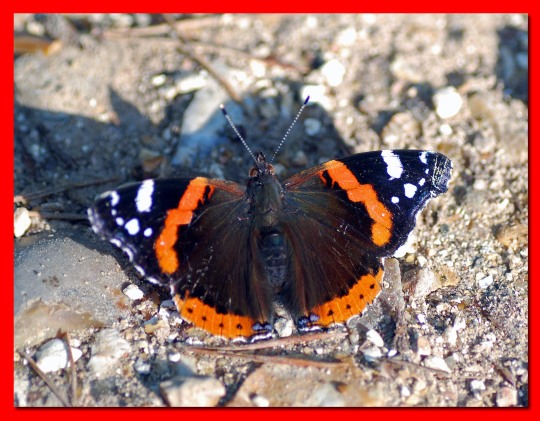
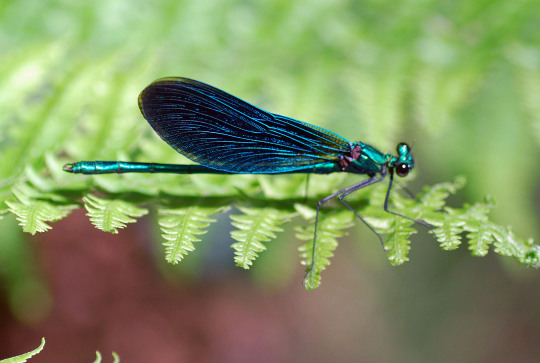
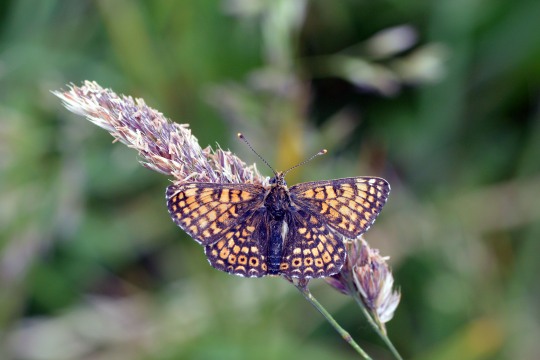
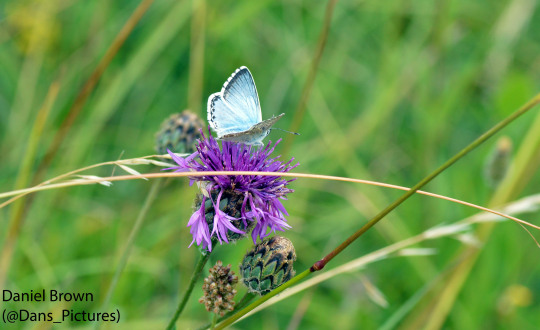
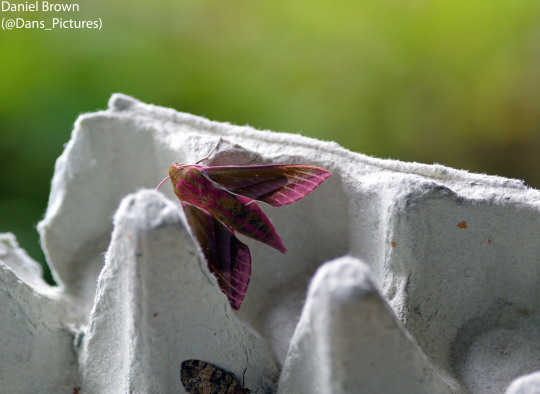



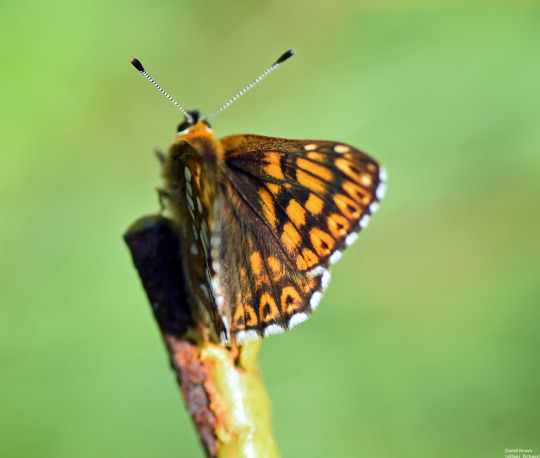

Celebrating 10 years of my interest in butterflies, and subsequent interest in moths, dragon and damselflies
As I tweeted earlier 10 years ago today I photographed a Silver-washed Fritillary butterfly at Bolderwood in the New Forest. I said to my Mum on the walk I’d like to know what species that was. I was excited coming home from school as a 13 year old one day that summer when she’d brought me a butterfly and moth identification book. Beforehand as a budding birdwatcher just into photography I had seen butterflies whilst out, it turned out I saw a Silver-washed Fritillary in summer 2009 at Acres Down in the New Forest identified later form a photo I’d taken of it, I could recgonise a Peacock or Brimstone and had heard of Speckled Wood but it went no further. But after that moment that summer from my first ever Small Tortoiseshell on a glorious day weather wise at Simonsbath on Exmoor on our West Country holiday to my first Common Grayling at another part of New Forest walks around Bolderwood I enjoyed seeing and sometimes photographing butterflies whilst out and then using the book to identify them. I also did this with the occasional day-flying moth or one that came into the house such as Five-spot Burnet and Yellow Shell. With my eyes open on that massive day for me looking back with the Common Grayling at Bolderwood we also noticed and then identified via the internet a Golden-ringed Dragonfly which paved the way for us to like the dragon and damselflies and notice and start to identify them too.
This of course overlapped into 2011′s spring and summer where I saw butterflies for the first time from Marbled White and Large Skipper and Small Heath to Small Copper. I mostly watched butterflies at our local country park Lakeside and other immediately local areas and the New Forest where we went nearly every walk back then, I saw my first forest heathland specialty Silver-studded Blue that year too. In those first two summers with perhaps the amount of new birds we were seeing slowing down whilst I loved birds so much and was proud of my way of life with my hobby, getting into butterflies and the satisfaction of zooming into the natural world and learning something new was a revelation and something that excited us so much. Moths here and there were along for the ride and 2011 was a year I got more and more into the dragon and particularly damselflies too.
This has set the tone for an amazing decade where beside my main interest in birds which itself has got deeper and deeper in that time and my photography I’ve had a brilliant interest in insects to compliment it and enrich my connection to and fondness of the natural world. I look forward to the sunny and warm/hot days which will allow these butterflies to emerge and fly every spring and summer the peak butterfly season and the sign posts the butterflies provide to take from spring into summer especially and its been a true honour to see 46 spectacular species, take so many photos of them and have some of my greatest ever experiences with these flamboyant insects. Over the 10 years the damselfly and dragonfly interest has gone nicely alongside the butterflies perhaps a little lesser interest for me and the moths are something I have dipped into. Its quite easy with butterflies especially to do a year by year look back as the peak season is probably March-October so its a cross-section of a year whereas if I did a post commenting on each of my birding years I’d have too much to write and be here forever with so many I am lucky to see each month. I used to even be able to list my top 5 butterfly days mostly when I’d seen a lot of species or individuals but I’ve had too many such days each year now luckily! So that’s what I do for the rest of this post, introducing pictures of these insects that I’ve taken in the past in this photoset as I go.
The other big thing about my insect season in 2011 was that I purchased an important bit of photography kit, my first ever macro lens which I only replaced this year and still have for backup. This helped me massively in terms of being able to get those precious pictures I needed to help use the book to identify species and just take for fun. I was able with the macro lens to get so much closer than I would with my normal lens and get that important detail. I found whole new thrills just from using the macro lens of chasing butterflies and taking little safety shots in case it flies off when one landed as I make my body (bend down) to get nearer and nearer to the subject and in the right position.
Something I always refer to as the thrill of the chase. It was a whole new way of photography to learn to the point and shoot stuff I do with birds for example and that shows why my butterfly interest probably wouldn’t have happened without my photography interest which I only developed two or so years into my birdwatching interest. One of my proudest 2011 butterfly picture efforts was the first in this photoset of one of my favourites the Red Admiral at yes - you guessed it - Bolderwood in the New Forest in a hot spell that October. 2012 was something of a comedown for many reasons we didn’t have our best butterfly season but still saw some, and the other insects the second picture in this photoset of a Beautiful Demoiselle at Whitefield Moor in the New Forest one of my best photos that year.
This only paved the way though for a rapid expansion in our butterfly interest and the species I could see similar to that of birds that year and years to follow in that we explored many more new habitats to allow us to see different butterflies as well as the ones we’d seen between 2010 and 2012. Visits to places like Martin Down, Stockbridge Down, Noar Hill and Bentley Wood in Hampshire (now what I call our butterfly big four) places we’d never been before allowed us to see lots of new species at these sites. We saw 11 new butterfly species for us that year the highest amount of new ones we’d ever seen in a year and those four places in particular we’ve come back every year since for those species and more. One standout moment of 2013 was visiting the Isle of Wight seeing my first ever Small Blue and the very rare Glanville Fritillaries at Ventnor one day in June I took the third picture in this photoset of the latter we have never seen them again since.
Our 2014 butterfly season was much the same as a year with those new places explored again seeing the ones from 2013, the ones we’d seen before and five more newbies. I recorded 39 butterfly species seen that year. That figure would stand as my highest butterfly year list total until 2018. I took the fourth picture in this photoset of one of my favourite butterflies the Chalkhill Blue at one of those places Stockbridge Down in July 2014.
2015 and 2016 for butterflies were two years where we used these newfound special and wild places and species and saw most of a defined set of them again including the ones I saw before 2013 and 2014 and the batch I first saw in those years. I took great joy in taking macro pictures of it seemed a slightly different set each year and I felt after a camera upgrade in 2013 my pictures were getting better and better of them. I didn’t see a new species again until 2018 but I just loved seeing the ones I had already again and again and learning what comes out when and all the little quirks. I was still so fascinated by these insects and so very happy to see them. In 2015 I took the fifth picture in this photoset of an Elephant Hawk-moth at Blashford Lakes and 2016 one of my favourite dragonflies the Southern Hawker at Rutland Water showing how moth and dragon/damselflies were still something we saw and photographed over that period. 2015 and 2016 also with us living right beside Lakeside such a good habitat for butterflies now saw the development of my little walks there within days often just with my macro lens to solely see or try to butterflies such as Marbled White and Small Skipper in summer especially. That went a stage further in 2016 with me working then to create something I do every year now seeing these species and more in cut throughs of the meadow area on my commute home on light and sunny/hot evenings then popping back over with my macro lens to see more and photograph them.
But what I had loved doing was just as I do with birds, for butterflies, (moths for a bit but I don’t anymore) and nowadays dragon/damselfly (joint list) alongside mammals is keeping year lists. My butterfly year lists managing in the middle part of last decade and beyond to get to above 30 each year were the ones I was second most excited about after my bird ones the real staple of my hobby. By 2017 I held ambitions to beat or level my 2014 total of 39. When I saw my first Brown Argus of the year at Stockbridge Down and my first Painted Lady of 2017 in the garden on one August day my 37th and 38th species that spring and summer I knew I had one more I felt I could see, the Clouded Yellow a rare and unpredictable one I’d seen ever year since my first in 2013. I got a bit complacent looking back within myself and wrote about this on social media and lo and behold I didn’t see Clouded Yellow that summer and didn’t manage it. I did take many pictures of butterflies I was proud of in 2017 though like the seventh in this photoset of a Marsh Fritillary at Martin Down.
2018 will go down as my biggest rollercoaster of a butterfly year and a classic and pivotal one for me. I had a poor start with the cold weather in March, but in the hottest and most truest summer for years I had a boom period catching up a lot of the species and seeing so many through spring and summer. I always had the chance to make our 2018 memorable as after years of searching for them mostly at Bentley Wood and my Mum’s husband but not us seeing one in 2017 there we had booked up to go on a wildland safari of Knepp in Sussex the rewilding project on 1st July 2018 to try and see them in the key days they’re around what had become our dream butterfly the Purple Emperor. We saw over 50 of them that day and had one of our greatest ever butterfly days as I took the eighth picture in this photostet of one. Only a week before, with a holiday to Yorkshire for Bempton Cliff’s seabirds in between a classic summer week, we’d seen our first new butterfly for four years a White-letter Hairstreak at Southampton’s Peartree Green a butterfly we saw again at Knepp that day. So there was a mini expansion here and in a glorious summer this helped with numbers. When I saw a Brown Argus during in Butterfly Conservation’s ‘Big Butterfly Count’ something I love doing every year now later that July at Lakeside I did what I couldn’t a year before and made it butterfly 39 of my year to match 2014. One key species I needed to see was left the Common Grayling which I did use the New Forest heaths and manage to see again to take my 2018 year list to 40. Sightings in September of one I’d only seen before in 2013 a Silver-spotted Skipper and eventually finally seeing a Clouded Yellow for the first time since 2016 and on 42 2018 was cemented as then my highest ever butterfly year list and most extraordinary butterfly year.
2019 surpassed 2018 and I always call it my greatest butterfly season but it was actually my greatest butterfly year with extraordinary amounts and a lot of species seen in very hot patches of especially February and a bit of March too with the sun shining so much a top start. Then despite a wet late spring a little through that time and the summer I saw all the ones I usually would. An unexpected Knepp trip last summer on our own for me without the safari brought us Purple Emperor again and White-letter Hairstreak views to mean I could match 2018′s total. What also helped were sightings throughout the year of two more new ones for me Lulworth Skipper at Durlson in Dorset a great southern specialty and a northern one a Northern Brown Argus at St. Abb’s Head, Scotland during our seabird holiday last year to Northumberland. I also caught up with another slightly forgotten one when I saw my first Small Pearl-bordered Fritillary since 2014 where it was a life tick at the same place at Bentley Wood. This allowed me to see 45 species in the end last year beating 2018 by three, and there was only one species I didn’t see last year that I have seen in my life the Glanville Fritillary. I took the ninth picture in this photoset of always one of the stars the Duke of Burgundy last year at Noar Hill.
From 2018 and especially 2019 leading into 2020 I got more interested in dragon and damselflies recognising and photographing many more species. Our discovery of Thursley Common in Surrey allowed us to see new species my last two dragon and damsel year lists have been my highest ever and have historic dragonfly days for us with so many seen as well as one at Rutland Water’s Lyndon reserve last year. For moths alongside the stack of day-flying ones I see each year which grows a bit as to what I recognise I have started to notice some coming in our house at nights and taking pictures of them and mostly using other’s kind knowledge find out what they are and add them to my moth list so its only a life list I keep of them now within my insect and mammal life list document separate to my bird year list one. Its still something of a side interest I don’t know what it is and photograph every moth I see but its nice to enjoy them now and again.
Then we get to 2020 which started a bit like 2018 with one butterfly seen in February then bad weather. But as spring was springing and common/early butterflies were all around the coronavirus hit the UK and the obvious need for lockdown looked set to threaten our year for butterflies and like it may be a dip. But with a new macro lens for me in tow I got it for my birthday this year producing butterfly shots I was so proud of I made the best of it. In fact, on daily exercise walks over Lakeside in the first bit of the lockdown and other local ones seeing butterflies alongside other wildlife became a strong source of hope and optimism for me and a brilliant way to escape the doom and gloom seeing these insects I adore with the moths and dragon/damselflies too. I discovered for butterflies I could see so many at local Lakeside and other areas such as the Small Copper in the final picture in this photoset taken in May species I would usually see further afield. I wrote this post on late May bank holiday Monday and timed it to go out but once restrictions eased a little we were able to safely whilst following social distancing rules get back out to other butterfly sites further afield for us where we’d usually go and my numbers we saw of species this year haven’t suffered greatly. In fact alongside the sense lockdown brought me of how much spectacular stuff I can see on my doorstep I saw most of my butterflies this year on my earliest or second earliest date ever so that’s been an interesting little quirk.
Thanks for all the appreciation you have ever shown my butterfly and other insect photos and thoughts. Here’s to the next 10 years!
#buterfly#moth#dragonfly#damselfly#bird#mammal#bentley wood#martin down#lakeside country park#eastleigh#bolderwood#boldwerwood new forest#red admira#new forest#common grayling#silver washed fritillary#stockbridge down#noar hill#duke of burgundy#marsh fritillary#small copper#pearl-bordered fritillary#purple emperor#uk#earth#happy#nature#natural world#hampshire#europe
1 note
·
View note
Text
infodump™
butterflies and moths are freaking great. british ones especially. there are 6 families of butterflies in the UK; hesperiidae (small skipper, essex skipper, lulworth skipper, chequered skipper, large skipper, silver-spotted skipper, dingy skipper, grizzled skipper), papillionidae (old world swallowtail, subspecies. brittanicus), pieridae (wood white, cryptic wood white, pale clouded yellow, clouded yellow, brimstone, small white, large white, orange tip, green veined white), lycaenidae (small blue, silver studded blue, brown argus, northern brown argus, common blue, chalkhill blue, adonis blue, large blue, brown hairstreak, green hairstreak, white-letter hairstreak, purple hairstreak, small copper, black hairstreak, holly blue), riodinidae (duke of burgandy) and nymphalidae (pearl boarded fritillary, small pearl boarded fritillary, high brown fritillary, dark green fritillary, silver washed fritillary, marsh fritillary, heath fritillary, glanville fritillary, purple emperor, white admiral, red admiral, painted lady, peacock, small tortoiseshell, comma, wall, speckled wood, mountain ringlet, scotch argus, ringlet, small heath, large heath, grayling, marbled white, meadow brown, gatekeeper). I dont know as much about moths as there are over 2000 but a few of my favourites are oleander hawk moth, (sphingidae, daphnis nerii) small emperor moth (uks only member of saturniidae, saturnia pavonia), elephant hawk moth (sphingidae, delephelia elpenor), angle shades (noctuidae, phologophora meticulosa), and poplar hawk moth (sphingidae, laothoe populi). I doubt anyone got this far but thanks if you did lol
#actually autistic#infodump#spin#special interest#butterflies#british butterflies#moths#british moths#aspie
11 notes
·
View notes
Text

kpop asks 01 - travel edition//butterfly by loona
✨ adonis blue - where are you from?
✨ brown argus - what’s the first place you’ve ever traveled to?
✨ chalk hill blue - what’s the last place you’ve traveled to?
✨ duke of burgundy - what’s your favorite place in the world?
✨ essex skipper - whom do you wish you could visit right now?
✨ glanville fritillary - what’s the most beautiful person you’ve ever met? where did you meet them?
✨ holly blue - what’s your favorite word in another language?
✨ large copper - where’s your favorite restaurant/café/food place located?
✨ marbled white - which country is your favorite? why?
✨ northern brown argus - what language do you want to learn?
✨ purple hairstreak - what’s your happiest memory? where did you gain that memory?
✨ red admiral - where do you currently live? is it the same place you were born at? if it’s not, why did you leave?
✨ small heath - where do you want to move in the future? do you want to move at all? why or why not?
✨ wood white - where do you want to die?
you can use the questions as asks or just answer them by yourself. also, tag me if you want, i’m interested to see your answers! please don’t repost, only reblog and add to it if you want.
why these questions?: i decided to keep all of the questions somewhat travel related since the mv to “butterfly” by loona showcases all kinds of women from different parts of the world and i wanted to see what people, especially those women, think makes this world so beautiful in turn.
#kpop#butterfly loona#butterfly#loona#girl group kpop#questions#q&a#asks#이달의 소녀#ask list#kpop asks#kpop themed asks#butterfly themed asks#kpop inspired#stan loona#travel asks#own list#kcreation
2 notes
·
View notes
Text
Fwd: Postdoc: UHelsinki.PopulationGenetics
Begin forwarded message: > From: [email protected] > Subject: Postdoc: UHelsinki.PopulationGenetics > Date: 6 December 2021 at 05:42:58 GMT > To: [email protected] > > > > Postdoctoral researcher position in population/landscape genetics at > the University of Helsinki > > Postdoctoral researcher position available in an integrative project to > address spatio-temporal genetic variation of butterflies in relation to > land use and recent population trends for a fixed term of 3-years. > > The post doc will join the Life-history Evolution Research Group > (https://ift.tt/31oM362) led by Associate > Professor Marjo Saastamoinen. The post-doctoral project will also be > part of a newly established Centre for Ecological Genetics (EcoGenetics) > (https://ift.tt/3oqzzG3), > an international collaboration between PIs from universities in Helsinki > (FI), Aarhus (DK), and Aberdeen (UK), with the aim to understand the > effect of insect decline on genetic diversity. In this specific project > the successful post-doctoral candidate is expected to use existing > time-series genomic data/samples available for the Glanville fritillary > butterfly (Melitaea cinxia) in the Åland islands, SW Finland, to examine > both spatial and temporal patterns of genetic variation in relation > to population demographics, climate and land use. Alternatively, or in > addition, genetic sampling of different butterfly species with varying > population trends across land-use gradient accompanied with historical > museum specimens can be used for a more comparative genetic analyses. The > centre will further establish relationships between genetic diversity > and organismal performance, and develop a predictive modelling framework > integrating genetic, ecological and environmental effects on insect > population genetics. The research spans several topics in ecological and > evolutionary research using different molecular methods and statistical > and process-based modelling. > > At the University of Helsinki, the research group of M. Saastamoinen > is also part of the Research Centre for Ecological Change > (www.helsinki.fi/rec) and the Research Programme of Organismal and > Evolutionary Biology at the Faculty of Biological and Environmental > Sciences. Thus the post doc will have an opportunity to interact > within the dynamic and highly international research environments, > with vast expertise in questions related to biodiversity change using > long-term ecological monitoring data and spatial statistical analyses. > The successful candidate will participate in planning and potentially > collecting samples, analyse the genetic data, and lead the writing of > the resulting manuscript(s). The candidate is expected to have a strong > background in evolutionary ecology, more specifically population or > landscape genetics. The successful applicant should have completed a PhD > in evolutionary ecology or genetics, or a related field, and have strong > statistical or bioinformatics skills. We seek candidates with excellent > written and verbal communication skills, and the ability to conceive, > execute and complete research projects, and to think independently and > creatively. The post doc will work as a part of a team and thus good > social skills are also required. > > The starting date is 1.2.2022, but a later starting date can be > negotiated. There will be a trial period of six months in the beginning. > > For more information, contact assoc. prof. Marjo Saastamoinen by email: > [email protected] The salary will be based on level 5 of > the demands level chart for teaching and research personnel in the > salary system of Finnish universities. In addition, the appointee will > be paid a salary component based on personal performance. The starting > salary will be ca. 3300–3800 euros/month, depending on the > appointee’s qualifications and experience. > > Application should include the following documents as a single pdf file: > • motivational letter (max 1 page), > • CV (max 2 pages) > • publication list > Include also contact information of two persons who can provide a > reference letter based on request. > > Please submit your application using the University of Helsinki > Recruitment System via the Apply link. Applicants who are employees of > the University of Helsinki are requested to leave their application via > the SAP HR portal. The deadline for submitting the application is 20 > December 2021. Moren information and the apply link: https://ift.tt/3GhFvHz > population-landscape-genetics In case you need technical support with > the recruitment system, please contact rekrytointi(at)helsinki.fi. > > > Marjo Saastamoinen > Associate Professor in Evolutionary Ecology > Helsinki Institute of Life Science (HiLIFE)/ Organismal and Evolutionary > Biology Research Programme > Faculty of Biological and Environmental Sciences > > University of Helsinki > > Finland > > https://ift.tt/31oM362 > > https://ift.tt/3dJHVjO > > "Saastamoinen, Marjo A K" > via IFTTT
0 notes
Text
How a Scientist's Blunder Let Loose Stomach-Bursting Parasites on a Remote Island
How a Scientist’s Blunder Let Loose Stomach-Bursting Parasites on a Remote Island
An ecologist’s blunder led to the release of a ‘Russian doll’ set of stomach-bursting parasites onto a remote Finnish island, a new study has revealed. Thirty years ago, when ecologist Ilkka Hanski introduced Glanville fritillary butterflies (Melitaea cinxia) onto the island of Sottunga in the Åland archipelago, he planned to watch how a population of one species that had been placed inside a…

View On WordPress
0 notes